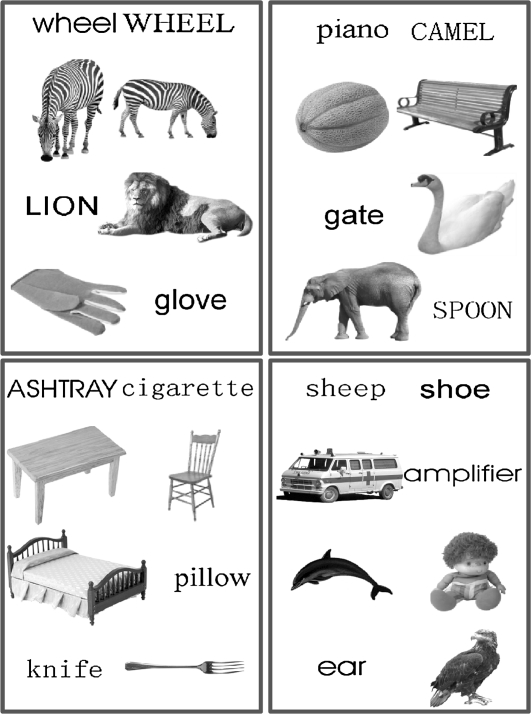Figure 3.
Examples of primes and targets. The 4 panels show examples of 4 types of relationship between the prime and the target and the 4 stimulus type pairings (W-W, P-P, W-P, P-W). Within each panel, the first row: prime = word, target = word, the second row: prime = picture, target = picture, third row: prime = word, target = picture, fourth row: prime = picture, target = word. Top-left panel = conceptual identity (same response): wheel-Wheel, zebra-ZEBRA, lion-LION, and glove-GLOVE. Bottom-left = semantic relationship: ashtray–CIGARETTE, table–CHAIR, bed–PILLOW, and knife–FORK. Top-right panel = unrelated: piano–CAMEL, melon–BENCH, gate–SWAN, and elephant–SPOON. Bottom-right = phonological relationship: sheep–shoe, ambulance–AMPLIFIER, dolphin–DOLL, and ear–EAGLE.

